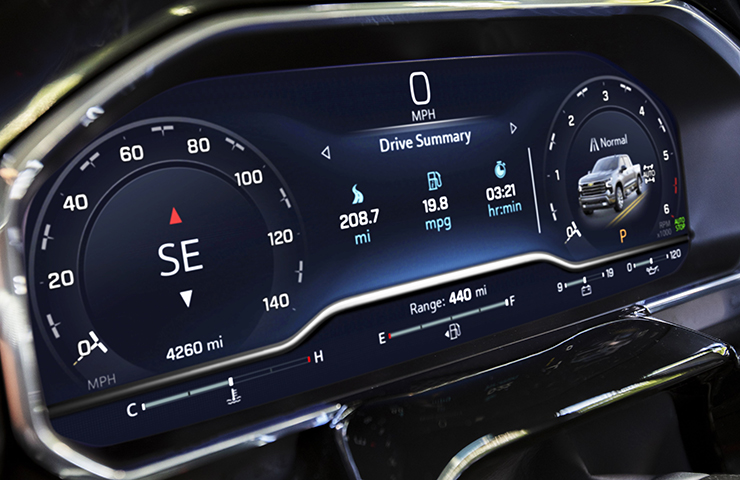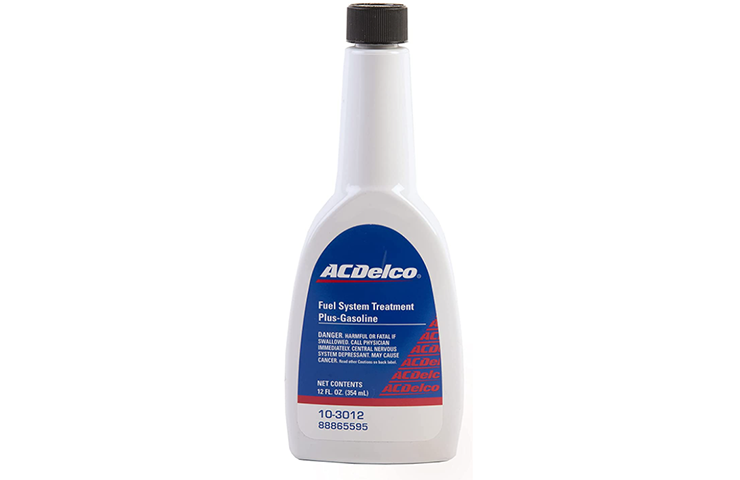Various unproven products over the years have claimed to improve vehicle fuel economy. Many of these product benefits are based on unsubstantiated claims. In fact, the U.S. Federal Trade Commission summarizes results for products tested by the federal government at their website.
With recent changes in overall fuel prices, some customers visiting GM dealerships may have considered using a number of fuel additives in a quest to increase fuel economy. (Fig. 7) However, instead of delivering the desired improvement in fuel economy, some fuel additives or fuel alternatives may lead to poor engine performance, drivability concerns and damage to the engine that is not covered by the New Vehicle Limited Warranty.
 Fig. 7
Fig. 7
Improper Fuel Additives
GM does not recommend the use of fuel additives or any other products that claim to help increase fuel economy.
For example, kerosene or diesel fuel should never be added to any gasoline engine. Kerosene and diesel fuel are distillate fuels that have very low octane. Since they are heavier (higher density) than gasoline, they will cause heavy engine deposits, oil degradation and very poor drivability.
Acetone, ketones or methanol additives also should never be put in any gasoline engine. Some of these solvents may be incompatible with rubber and/or sealing components or may damage or corrode the fuel system. Damage to vehicle components that result from using non-approved or aftermarket additives are not covered by the New Vehicle Limited Warranty.
Fuel Quality
When diagnosing a possible fuel quality concern, reference the vehicle’s Owner’s Manual for fuel requirements and check the vehicle’s RPO list.
Verify the following:
- Ask if the customer knows what fuel is in the vehicle.
- Ask if the customer knows what fuel is recommended to be used in the vehicle.
- At what operating temperature is there a concern: Hot or cold?
- At what ambient temperature is there a concern: Hot or cold?
- When does it occur – accelerating, decelerating, cruising, aggressive driving, cold, hot, accessories on, etc.
- Can it be driven through?
- Fuel sample
Performance vehicles and turbocharged engines may see a greater concern if owners use a lesser octane gasoline than required or E85 fuel in non-compatible engines. Verify that the fuel being used is recommended for the engine.
Maximizing Fuel Economy
The best fuel economy possible for a vehicle is often achieved through proper maintenance and good driving habits. Performing common maintenance, such as replacing a dirty air filter and maintaining the proper tire pressure, can impact a vehicle’s performance and efficiency.
Under-inflated tires are also a major contributor to poor fuel economy as low air pressure can create drag that the vehicle’s powertrain must overcome, wasting fuel. The correct tire air pressure promotes fuel efficiency and reduces tire wear, further decreasing vehicle operational costs per mile.
Driving habits also can affect fuel consumption. Aggressive driving, such as quick or full-throttle acceleration from a standstill and heavy braking as well as high cruising speeds on highways will reduce the fuel economy of all vehicles.
Fuel System Treatment
GM is aware that some companies are marketing tools, equipment and programs to support fuel injector cleaning as a preventative maintenance procedure. GM does not endorse, support or acknowledge the need for fuel injector cleaning as a preventative maintenance procedure. Fuel injector cleaning is approved only when performed as directed by a published GM drivability or DTC diagnostic service procedure.
Due to the variation in fuel quality in different areas, the only preventative maintenance currently endorsed by GM regarding its gasoline engine fuel systems is adding GM Fuel System Treatment PLUS to a tank of fuel at each oil change. (Fig. 8) These fuel additives, which should be used when the vehicle exhibits loss of power, diminished performance, or a noted decrease in fuel economy, can help with the prevention and removal of deposits from the intake valves, fuel injectors and the combustion chamber.
 Fig. 8
Fig. 8
More information about ways to optimize fuel economy, driving more efficiently, and detailed test information can be found at www.fueleconomy.gov, the official U.S. Department of Energy website.
For additional information and part numbers, refer to the latest version of Bulletin #05-00-89-072 and Bulletin #04-06-04-051.
– Thanks to Bryan Salisbury



















ACDelco Top Engine Cleaner and Fuel System Treatment Plus has been replaced with ACDelco Fuel System Cleaner 44K. The bulletins have been updated.
hello a be dealer just came in and said gm no longer uses this or 19355198 they came in with a new bg tool and said we no longer use the way listed in the 16-na-383 or the video in emerging issues. is this true? is there a new bulletin being published ?